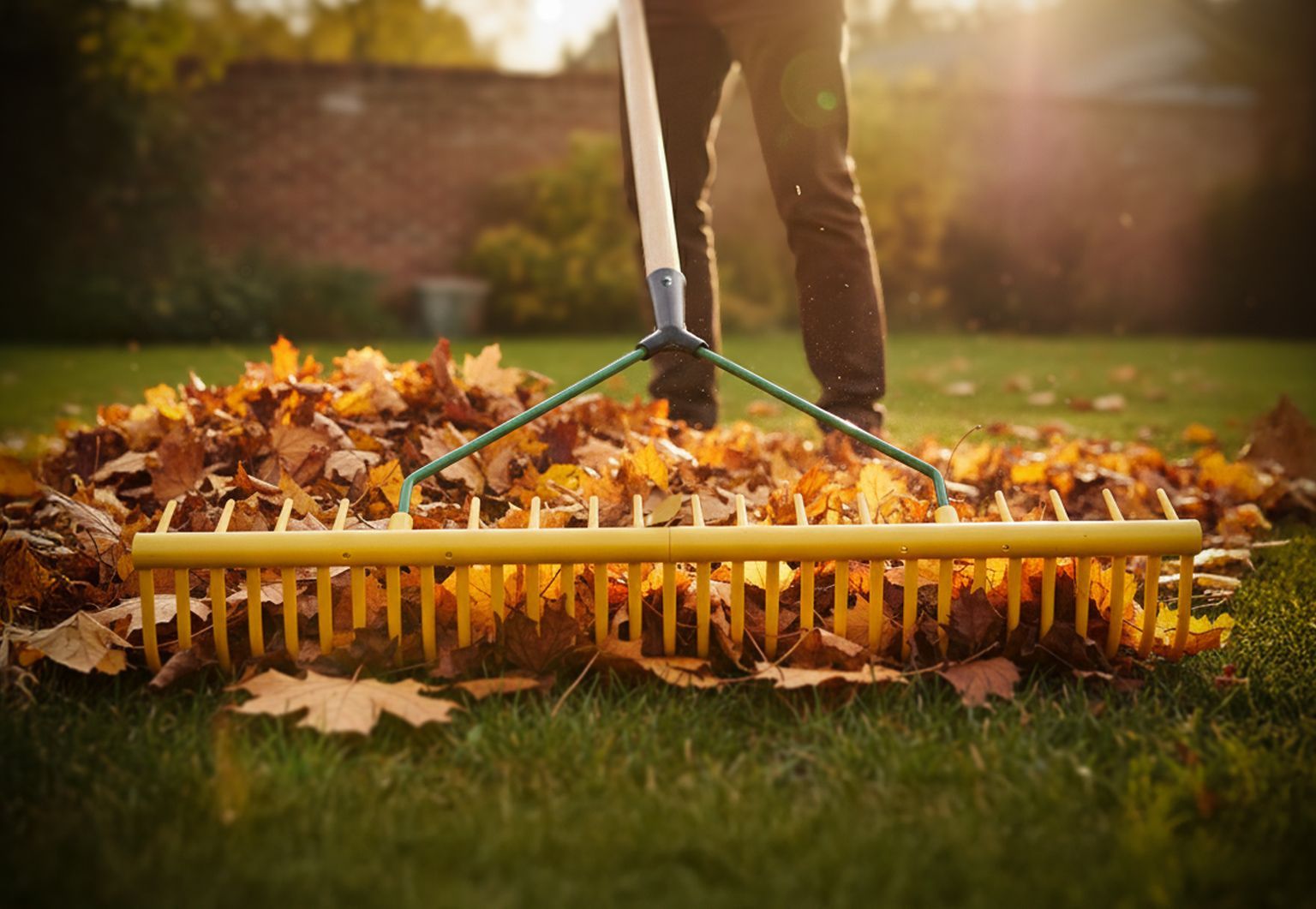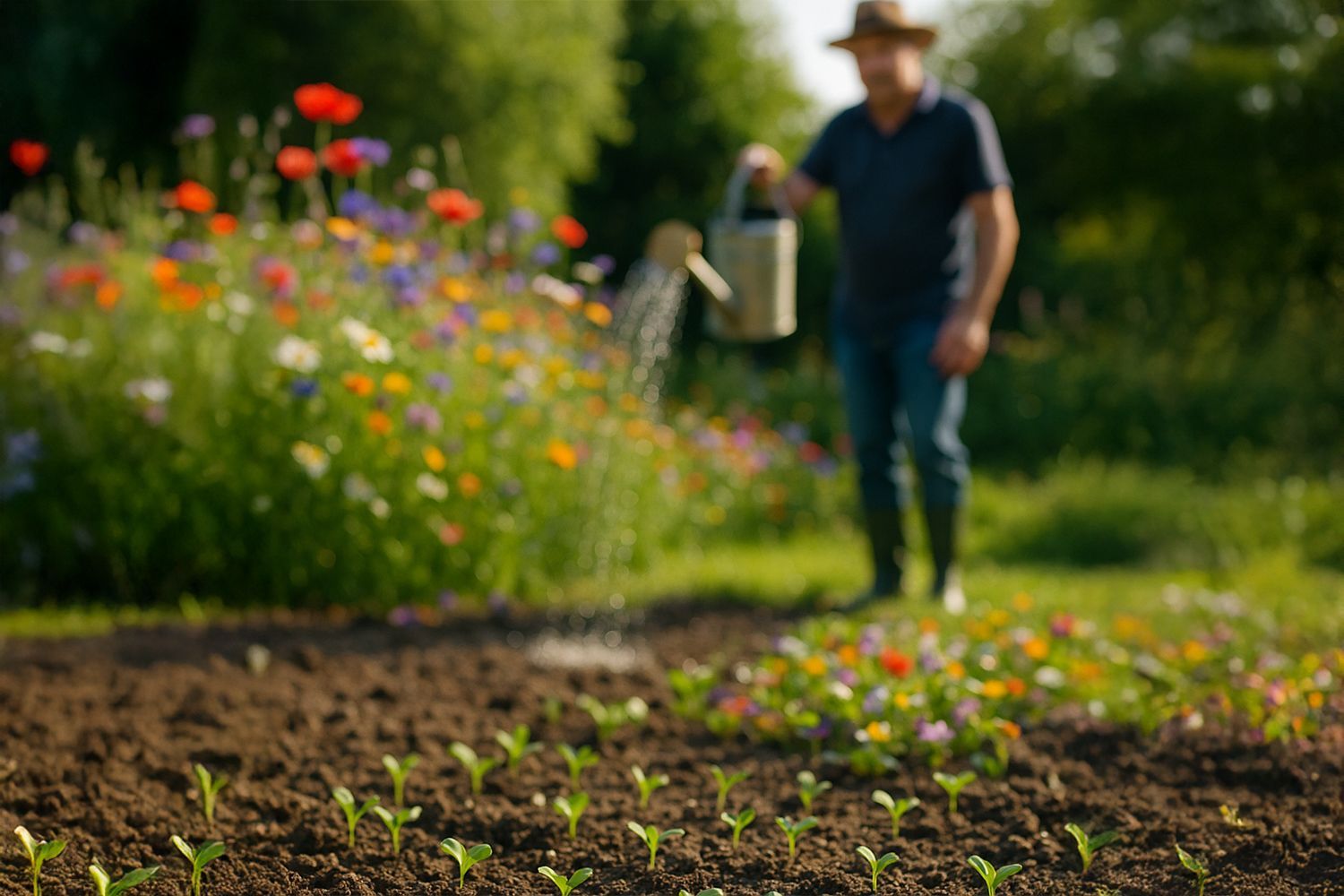
From Autumn Bounty to a Winter-Ready Garden
Autumn is the gardener’s sweetest dilemma - gluts of apples, squash, and root veg swelling in the beds, while frost whispers at the edges of night. What if you could preserve that harvest, protect your soil, and greet spring with a stronger garden than ever?
In this post, you’ll learn how UK gardeners can
store and preserve autumn crops and
prepare the garden for winter - with practical, low-waste methods, wildlife-friendly touches, and seasonal know-how rooted in British conditions.
Part #1: Preservation Methods
Freezing
Blanch brassicas, beans, sprouts and leafy greens, then plunge into cold water and dry. Pack in portions. The RHS notes that freezing slows spoilage and retains nutrients.
Drying / Dehydration
Hang chillies or herbs in well-ventilated rooms. Slice apples or tomatoes and use a low oven or dehydrator.
Pickling, Jams & Chutneys
Use sugar, vinegar or brine to suppress spoilage organisms. Jams, pickles, and chutneys are classic preserving tools in British kitchens.
Root Storage (Cool, Dark, Moist)
Store root vegetables like carrots, parsnips, and beets in boxes of moist sand or coir in a frost-free shed, garage or cellar. Some roots can even stay in the ground if covered with straw or mulch on well-drained soil.
Best Crops to Preserve & Store
| Crop | Method(s) | Tips |
|---|---|---|
| Winter squash & pumpkins | Cure then store dry | Cure for 10 days at ~25 °C, then keep at 10–15 °C |
| Apples & pears | Cool storage | Only store unblemished, slightly underripe fruit |
| Carrots, parsnips, beets | In situ with mulch / sand boxes | Lift in cold regions; keep in damp sand |
| Onions, garlic | Cure fully, keep dry | Hang or plait in a cool, airy place |
| Herbs | Drying, freezing | Freeze soft herbs in oil or butter for flavour cubes |
Common Preservation Pitfalls & Fixes
Mould & rot:
Use dry, undamaged produce and ensure airflow.
Sprouting:
Keep in cool, dark conditions.
Freezer burn:
Use quality containers, remove excess air.
Rodents:
Use sealed or elevated containers.
Flavour transfer: Store apples away from root veg — ethylene makes them sprout!
Sustainable Preservation Tips
Reuse glass jars and silicone freezer bags.
Compost peelings and trimmings.
Share or trade surplus with neighbours.
Plan
to preserve only what you’ll actually eat.
Related products
Frost Protection Fleece -Crop Cover
This durable 17g/m² fabric features laser-welded seams for strength and longevity. Ideal for both indoor and outdoor use, it shields crops from frost, wind, and pests.
Stainless Steel Perennial Border Spade & Fork Set
Built with robust split ash wood handles and durable UK-made steel, this elegant duo combines strength, style and precision -perfect for long-term planting and upkeep.
32 Tooth Polypropylene Landscaping Rake
With 32 transverse teeth acting as a grass-catching device, this rake efficiently handles large turfed areas, effortlessly collecting grass clippings and leaves.
Part #2:
Prepare Your Garden for Winter
Autumn Clean-Up (Smart, Not Sterile)
- Remove spent annuals and diseased plants, but leave healthy seed heads for wildlife.
- Rake leaves off lawns but let some rest on beds as mulch.
- Weed now before the ground hardens.
- Prune sparingly - leave strong perennials standing for structure and habitat.
Soil Care & Covering
- Add compost or well-rotted manure (about 5 cm deep). Worms will work it in by spring.
- Apply mulch (leaf mould, straw, bark) to insulate and protect soil.
- Sow green manures (rye, clover, mustard) to prevent nutrient loss.
- Address drainage problems now — standing water causes root rot.
Frost Protection
- Cover vulnerable crops with horticultural fleece or cloches.
- Group pots against sheltered walls and insulate them.
- Stake young trees and wrap tender stems.
- Use mulch around roots to buffer temperature swings.
Wildlife-Friendly Wintering
- Leave hollow stems and seed heads for insects and birds.
- Create log or twig piles for hedgehogs and amphibians.
- Clean bird feeders and keep them topped up; provide fresh water daily.
- Avoid over-tidying — leaf litter shelters countless beneficial bugs.
Late-Autumn Planting & Planning
- Bulbs: Daffodils, tulips, crocuses, snowdrops — plant now at 2–3× bulb depth.
- Garlic & onions: Plant in Oct–Nov for early summer harvests.
- Trees & shrubs: Plant bare-root while dormant.
- Service tools, clean pots, order seeds, and sketch next year’s plan.
Pest & Disease Prevention
- Dispose of diseased leaves (don’t compost them).
- Lightly fork over beds to expose overwintering grubs to birds.
- Use grease bands on fruit trees to trap crawling pests.
- Clean tools and greenhouses to prevent fungal carryover.
- Limit slug habitats and encourage predators (frogs, hedgehogs, birds).

Pro Tips
- Label preserves with date and contents.
- Eat older jars first.
- Keep fleece and plant covers ready for sudden frost.
- Group frost-sensitive pots together for warmth.
- Photograph beds and seed packets before winter to aid spring planning.
Winter Prep Checklist
- Harvest and sort produce.
- Blanch and freeze greens.
- Dry herbs and make chutneys.
- Store or lift root crops.
- Remove diseased debris.
- Compost healthy plant waste.
- Mulch and add compost.
- Protect tender plants.
- Plant bulbs, garlic, onion sets.
- Clean, oil and store tools.
- Set up bird feeders and log piles.
- Plan next year’s crop rotation.
Final Thoughts
As the days grow shorter and the air turns crisp, there’s real satisfaction in knowing your garden - and your hard work - will keep rewarding you through winter. Whether it’s jars of chutney on the shelf or tidy beds sleeping under mulch, every step you take now sets the stage for a thriving spring. Preserve what you’ve grown, protect what you’ve planted, and enjoy the quiet beauty of a garden at rest - it’s all part of the year-round rhythm of growing in the UK.













